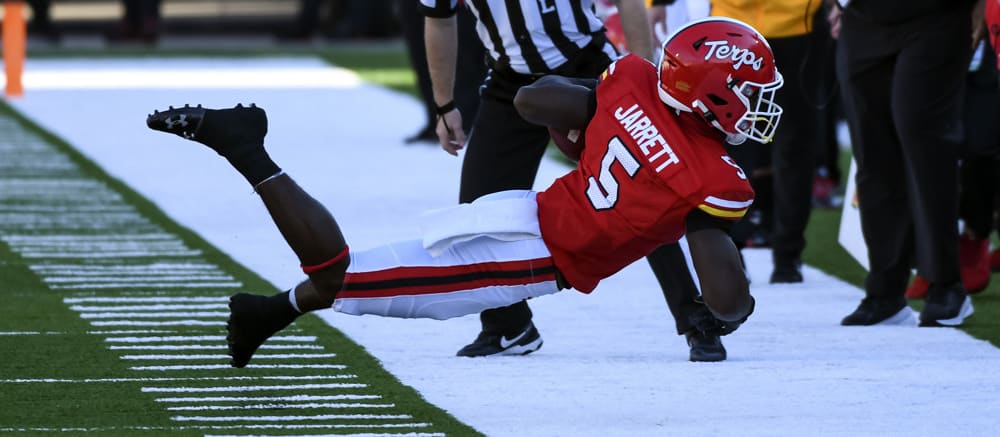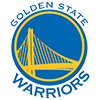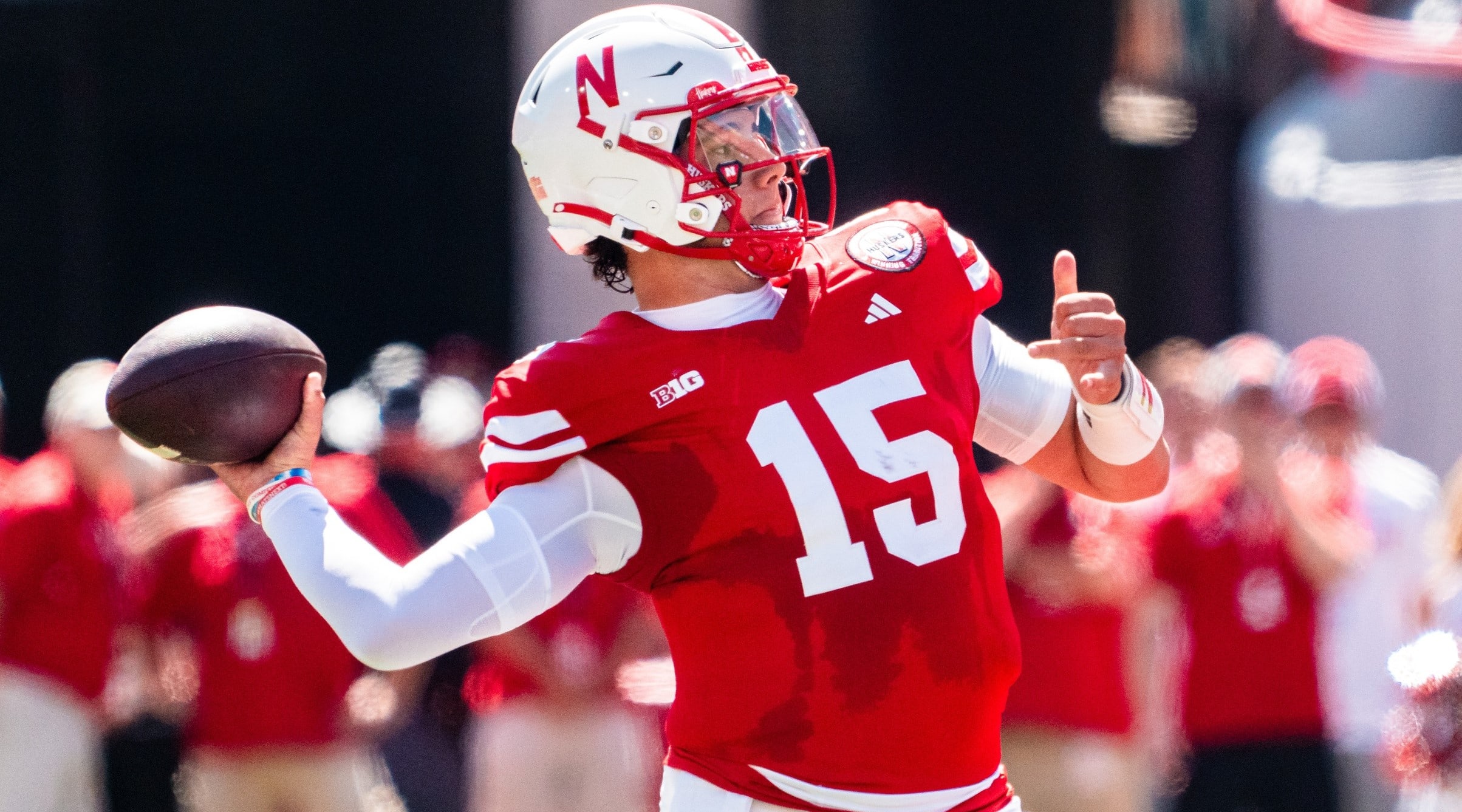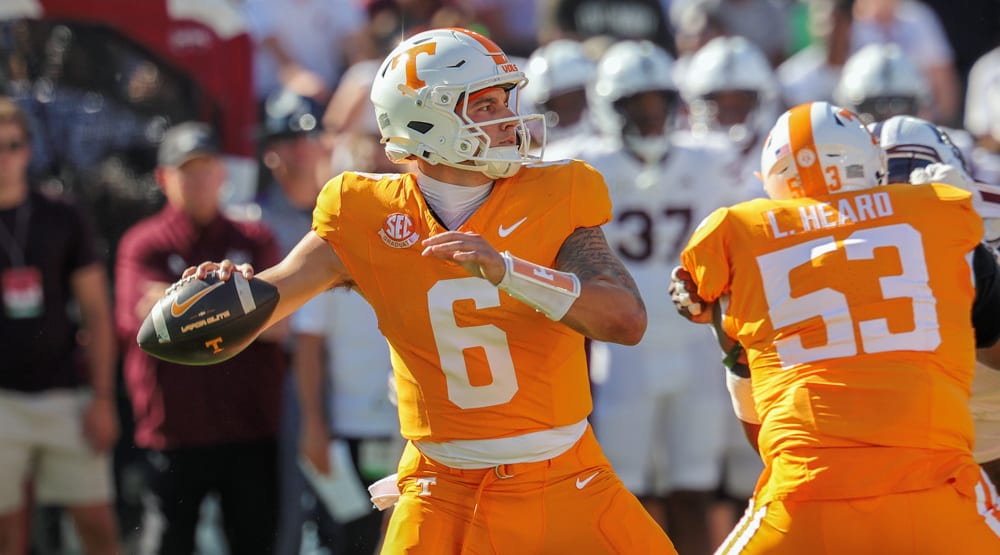We continue our college football conference previews with the Big Ten, where running backs, defenses and punters traditionally dominate the style of play. This could be set to change in dramatic fashion once USC and UCLA officially join the conference in 2024. However, one just has to look at the All-Big Ten Fantasy Teams this year to see that there should be a group of quarterbacks and wide receivers that steal the headlines in 2022. This article will look to highlight the fantasy ballers that could pop, as well as those that might be set to flop this coming college football season.
All-Big Ten Fantasy Team (2022 Position Ranks)
First-Team
QB: C.J. Stroud, Ohio State (3)
RB: TreVeyon Henderson, Ohio State (4)
RB: Braelon Allen, Wisconsin (13)
WR: Jaxon Smith-Njigba, Ohio State (1)
WR: Jayden Reed, Michigan State (6)
WR: Tyrone Tracy, Purdue (11)
TE: Sam LaPorta, Iowa (9)
Second-Team
QB: Taulia Tagovailoa, Maryland (25)
RB: Blake Corum, Michigan (15)
RB: Mohamed Ibrahim, Minnesota (16)
WR: Parker Washington, Penn State (12)
WR: Marvin Harrison, Ohio State (13)
WR: Omar Manning, Nebraska (22)
TE: Payne Durham, Purdue (10)
Third-Team
QB: Aidan O'Connell, Purdue (26)
RB: Chase Brown, Illinois (19)
RB: Donovan Edwards, Michigan (32)
WR: Broc Thompson, Purdue (27)
WR: Rakim Jarrett, Maryland (37)
WR: Mitchell Tinsley, Penn State (38)
TE: Travis Vokolek, Nebraska (12)
Big Ten Fantasy Sleepers
QB: Casey Thompson, Nebraska
It's likely that Thompson ultimately chose to transfer to Nebraska this offseason for one primary reason: new offensive coordinator Mark Whipple. In the same role with Pittsburgh last year, Whipple engineered one of college football's most prolific passing offenses with an average 39.2 passing attempts en route to 328.3 passing yards per game (11th and 8th in the nation, respectively), thus leading to a Heisman-finalist campaign for quarterback Kenny Pickett. Cornhuskers head coach Scott Frost has already said that he relinquished control over the team's passing game to Whipple this offseason. Therefore, it's reasonable that Thompson could flourish as well. The Texas transfer threw for 2,113 yards, 24 touchdowns and a 63.2 completion percentage over 12 games with the Longhorns in 2021, and he is anticipated to start for Nebraska this coming season. While the Cornhuskers don't have a receiving threat anywhere close to Biletnikoff Award winner Jordan Addison, Whipple should find new ways to lean into his most dangerous offensive playmakers once again (with Thompson chief among them).
Thompson should also benefit from a schedule whose first six opponents, which includes two FCS teams, allowed an average opponent passer rating of 145.3 last year. However, each of the Cornhuskers' final four opponents (Minnesota, Michigan, Wisconsin and Iowa) ranked in the top 15 of the FBS in opponent passer rating allowed in 2021; so, it might be best to have a solid backup quarterback stashed for those final four weeks of the season.
QB: Tanner Morgan, Minnesota
As recently as 2019, Morgan passed for 3,253 yards, 30 touchdowns, seven interceptions and a 66 percent completion rate while playing under offensive coordinator Kirk Ciarrocca. After that season, Ciarrocca left Minnesota to take the same position at Penn State, and Morgan has floundered since. The quarterback threw for a combined 3,418 yards and a 17:14 TD:INT ratio in 20 games over the past two seasons. What's more, Morgan took a backseat role in Minnesota's run-first offense that passed the ball on just 30 percent of downs last year. Now that the Golden Gophers have re-hired Ciarrocca heading into the 2022 season, there's reason to believe that the sixth-year senior can bounce back as well.
Minnesota returns a veteran corps of receivers headlined by leading receiver Chris Autman-Bell. While Ciarrocca's offensive play calling is slightly more balanced, his scheme ultimately builds a vertical passing game off an aggressive rushing attack. The Golden Gophers have just one returning starter on the offensive line, but the running game should remain strong with rushers Mohamed Ibrahim – who eclipsed 1,000 yards rushing over just seven games in 2020 –- and Trey Potts both coming back from season-ending injuries suffered early on last year. The overall offensive personnel isn't as good on paper as it was in 2019, but the return of many reliable pieces could help Morgan move back toward his sophomore form.
RB: Chez Mellusi, Wisconsin
Mellusi was well on his way to over 1,000 rushing yards during his first season with the Badgers in 2021 before a torn ACL cut this campaign short to just nine games. The Clemson transfer initially won the team's starting running back job to open the season, though he and the rest of Wisconsin's offense failed to establish any consistency through the first four weeks (averaged 4.4 yards on 18.8 carries per game). In fact, it wasn't until the emergence of freshman phenom Braelon Allen that Mellusi was able to settle in as the complementary piece in this dangerous 1-2 punch at running back (averaged 4.9 yards on 19.6 carries per game from Weeks 5-9). Wisconsin lost its top-three leading receivers from last season, and finding success on the ground will be the No. 1 priority for any offense under head coach Paul Chryst. Running the ball this much will require more than one rusher to carry such a heavy workload, which means Mellusi should see more than enough opportunities to finally produce his own 1,000-yard rushing campaign. The 5-foot-11 back will also be ready to take on the full weight of Big Ten defenses after he gained 15 pounds this offseason, according to Jeff Potrykus of the Milwaukee Journal Sentinel. If new offensive coordinator Bobby Engram can find ways to get Mellusi the ball more in open space or in the passing game, then he should carry as much upside as any RB2 in the nation.
RB: Evan Hull, Northwestern
In 2021, Hull stepped into Northwestern's primary rushing role after Cam Porter – the team's leading rusher from 2020 – went down with a season-ending lower-body injury during preseason camp. Hull did not disappoint as the Wildcats' starting running back, rushing for 1,009 yards, seven touchdowns and an average 5.1 yards per carry over 12 games. With a rotating cast of poor quarterbacks throughout the season, the Wildcats leaned into the running game with more than twice as many total rushes (37.6 per game) than passing attempts (17.3 per game) in 2021. As a result, Hull eclipsed the century rushing mark in four of his 12 starts while also adding another 264 yards on 33 total receptions. Northwestern's options under center remain similarly wanting headed into the 2022 season. Likewise, Porter's availability for the team's Week 0 matchup against Nebraska is still up in the air. So, while it might not be the best recipe for overall team success, this set of circumstances should ensure that Hull will see a stable workload, even if he does wind up splitting the snaps out of the backfield with Porter throughout the season.
WR: Dontay Demus, Maryland
Demus is still recovering from a torn ACL suffered in early October of last season. So, Maryland head coach Mike Locksley surprised many when he said at Big Ten Media Days that "We do expect [Demus] – barring any setbacks in training camp – to be back for the opening game." The wideout is ahead of schedule in his rehab and, if he does in fact return by Week 1, Demus should reprise his role as the Terrapins' top receiving threat. Before going down in their Week 5 loss to Iowa, the 6-foot-4 wideout paced Maryland's receiving corps in targets (36), receptions (28) and receiving yards (507). Demus' 18.1 yards per catch also finished as the third-highest mark in the Big Ten behind Nebraska's Samori Toure (19.9) and MSU's Jalen Nailor (18.8). Despite Demus' absence, Maryland had one of the nation's most prolific passing offenses last year led by quarterback Taulia Tagovailoa (38.1 passing attempts per game ranked 14th in the FBS). Locksley's offense should boast one of the conference's best all-around stable of wideouts and, should he return to his pre-injury form, Demus has a good chance to emerge as the alpha of this group of pass catchers.
WR: Ronnie Bell, Michigan
It's easy to forget about the absence of Bell, who missed the entirety of last season due to a knee injury, given the way that the 2021 campaign ended for coach Jim Harbaugh's Wolverines. But, it's important to remember that the wideout totaled 74 catches for 1,159 yards on 124 targets between 2019 and 2020. Bell is on pace to be medically cleared for the 2022 season opener versus Colorado State, and he should reprise his role as the team's primary receiving option ahead of wideouts Cornelius Johnson and Roman Wilson and tight end Erick All. Last season, Michigan's balanced offense found success with a passing game led by two quarterbacks: steady junior Cade McNamara and highly talented freshman J.J. McCarthy. Should the latter win out into a more prominent role this coming season, the Wolverines' entire passing game could take a jump. The return of Bell combined with the loss of leading rusher Hassan Haskins could spur an even further shift toward a more aggressive passing attack as well.
Big Ten Fantasy Busts
RB: Nicholas Singleton, Penn State 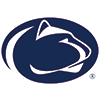
While Singleton was the top-ranked running back recruit in the class of 2022, he now enters what is perhaps the most dysfunctional rushing offense in the Big Ten. The Nittany Lions averaged 33.6 rushes per game which made up 45.3 percent of the team's total downs last season (a mark that ranked 109th in the FBS). This lack of commitment to the running game came for good reason: Penn State averaged 3.2 yards per carry in 2021 (117th in the FBS). Led by rushers Noah Cain (who transferred to LSU this offseason) and Keyvone Lee, this lack of rushing efficiency wasn't for a lack of talent; instead, Penn State's porous and inconsistent offensive line was largely to blame. According to FootballOutsiders.com, Penn State's offensive line ranked 116th in the FBS for average line yards per carry (a statistic that represents how many yards an offensive line gets credit for on a given rush) with 2.36. Outside of Cornell transfer offensive lineman Hunter Nourzad, this unit figures to look largely the same in 2022. Listed as 6-foot, 219 pounds, Singleton has the size and talent to step in right away as a freshman, but it's hard to imagine that he'll be able to overcome this lack of proven pieces around him.
RB: Challen Faamatau, Maryland 
Faamata may be the most experienced tailback on Maryland's roster, but he is far from guaranteed a role as the team's top rusher this coming season. The 225-pound senior averaged just 4.2 yards per carry last season and finished third on the team in attempts and rushing yards (56-235-3) behind fellow backs Tayon Fleet-Davis (128-721-8) and Colby McDonald (60-325-2). With Fleet-Davis gone to the NFL, it's most likely that the Terrapins will opt for a running-back-by-committee approach that could include Faamatu, McDonald and second-year back Roman Hemby - the latter two of which saw heavy action in Maryland's 2022 spring game after Faamatu was helped off the field with an injury suffered early on in the scrimmage. There's also a chance that four-star freshman Ramon Brown pushes for touches out of the backfield as well. Such a rotation wouldn't provide much in terms of upside either. Maryland ran the ball on just 44.7 percent of plays last season - a mark that ranked 116th among FBS programs - and it'll be tough to steal passes away from the team's deeply talented group of wide receivers. Unless one of these backs can run away with the starting job, it's best to avoid investing in any single Terrapins rusher.
RB: Jarek Broussard, Michigan State 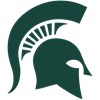
Broussard possesses a lot of athleticism and elusiveness as a rusher, but it's hard to imagine that he can match the elite playmaking of running back Kenneth Walker. The 2021 Doak Walker Award winner averaged 6.2 yards per carry and accounted for over two-thirds of Michigan State's rushing yards last season - all while running behind an offensive line that ranked in the bottom half of the FBS across all six of FootballOutsiders.com's run-blocking statistics. This unit's performance could drop off even further in 2022 after the loss of three starters and a total of five upperclassmen from the offensive line. Broussard overcame even greater offensive line woes at Colorado when he earned the 2020 All-Pac-12 Offensive Player of the Year award; but, he'll now go up against a Big Ten conference schedule featuring four teams (Wisconsin, Minnesota, Michigan and Ohio State) that ranked in the top-35 nationally for yards per rush allowed last season. Not to mention, the 5-foot-9 rusher is already behind the sticks in the competition for the starting job after Wisconsin transfer Jalen Berger impressed during spring practices before Broussard arrived on campus. There's a lot to like about what Broussard brings out of the backfield, but he'll have a lot working against him as he takes the step up to the Big Ten conference.
QB: Payton Thorne, Michigan State 
I expect Thorne's production to take a step back in 2022 for many of the same reasons brought up above. The first-year starter benefitted from playing alongside Kenneth Walker as much as any other player on the Spartans' offense last year. With opposing defenses focused on stopping Michigan State's rushing offense, Thorne gashed teams on play action, ranking 11th nationally in yards gained per completion and registering a 12:2 TD:INT ratio on play-action passes in 2021, according to Colton Pouncy of The Athletic. Thorne finished just 80th in completion percentage among FBS quarterbacks last season, but these explosive plays helped make up for the quarterback's lack of efficiency as he also ranked 24th for passing yards per completion (13.79). Along with Walker and three starters up front, Michigan State's offense also lost its most explosive pass catcher in No. 2 wideout Jalen Nailor, who averaged 18.8 receiving yards across 37 catches in 2021. Therefore, it feels like quite the stretch to imagine that Thorne can match his program-record 27 touchdown passes from last season once more in 2022.
WR: Rakim Jarrett, Maryland 
Jarrett returns as Maryland's top receiver from 2021 after hauling in 62 receptions for 829 yards and five touchdowns, but he won't have the same amount of room along the perimeter to operate as he did last season. The now-junior wideout took over as Maryland's No. 1 receiver after big-play threat Dontay Demus went down with a season-ending torn ACL in Week 5. From then on, Jarrett saw the lion's share of his team's passing attempts, including two outings with double-digit targets against Michigan State (14) and Rutgers (12). This preference in the passing game was further aided by season-altering injuries to wideouts Marcus Fleming and Jeshaun Jones – both of whom figure to return to the field this coming season. Jarrett will also have to compete with fellow former top-100 receiver recruit Jacob Copeland, who transferred to Maryland after leading Florida with 41 receptions for 642 yards and four touchdowns. Therefore, the most likely scenario would be for the top combination of Demus, Copeland and Jarrett all eat into one another's targets (unless one of these three can manage to break away from the pack and take over as the team's clear-cut No. 1 receiver).
WR: Omar Manning, Nebraska 
Manning's second-team All-Big Ten fantasy projection relies largely on his presumed ascent into the team's primary receiving option this coming season. This seems logical given that Manning is Nebraska's top returning receiver in terms of yards and catches; however, coach Scott Frost's program brought in transfer wideouts Trey Palmer from LSU and Isaiah Garcia-Castaneda from New Mexico State. There's also returning wideout Oliver Martin, who impressed with 6 catches for 103 yds in the 2021 season-opener against Illinois, but missed the next four games with injury and never found his footing again. Tight end Travis Vokolek could also see a target share similar to that of Austin Allen - the team's second-leading receiver from last season.
As referenced above, offensive coordinator Mark Whipple likes to lean heavily into one or two primary offensive weapons: Pittsburgh wideout Jordan Addison (100 receptions) more than doubled the team's next closest receiver, Jared Wayne, in terms of receptions (47) last year under Whipple. It's unclear which of Nebraska's offensive perimeter players could assume a similar focal point in the Cornhuskers' offense, but Manning, who brought in 26 of his 39 targets while playing behind Samouri Toure last season, will have a large hill to climb in taking over such a spot.
2022 College Fantasy Football Draft Kit
- College Football Fantasy Quarterback Rankings
- College Football Fantasy Running Back Rankings
- Conference Preview: ACC
- Conference Preview: Big 12
- Conference Preview: Conference USA
- College Football Projections
- College Football Fantasy Five
- College Football Rankings
- College Football Cheat Sheet
- National Championship picks
- National Championship odds
- Heisman watch
- Heisman odds


